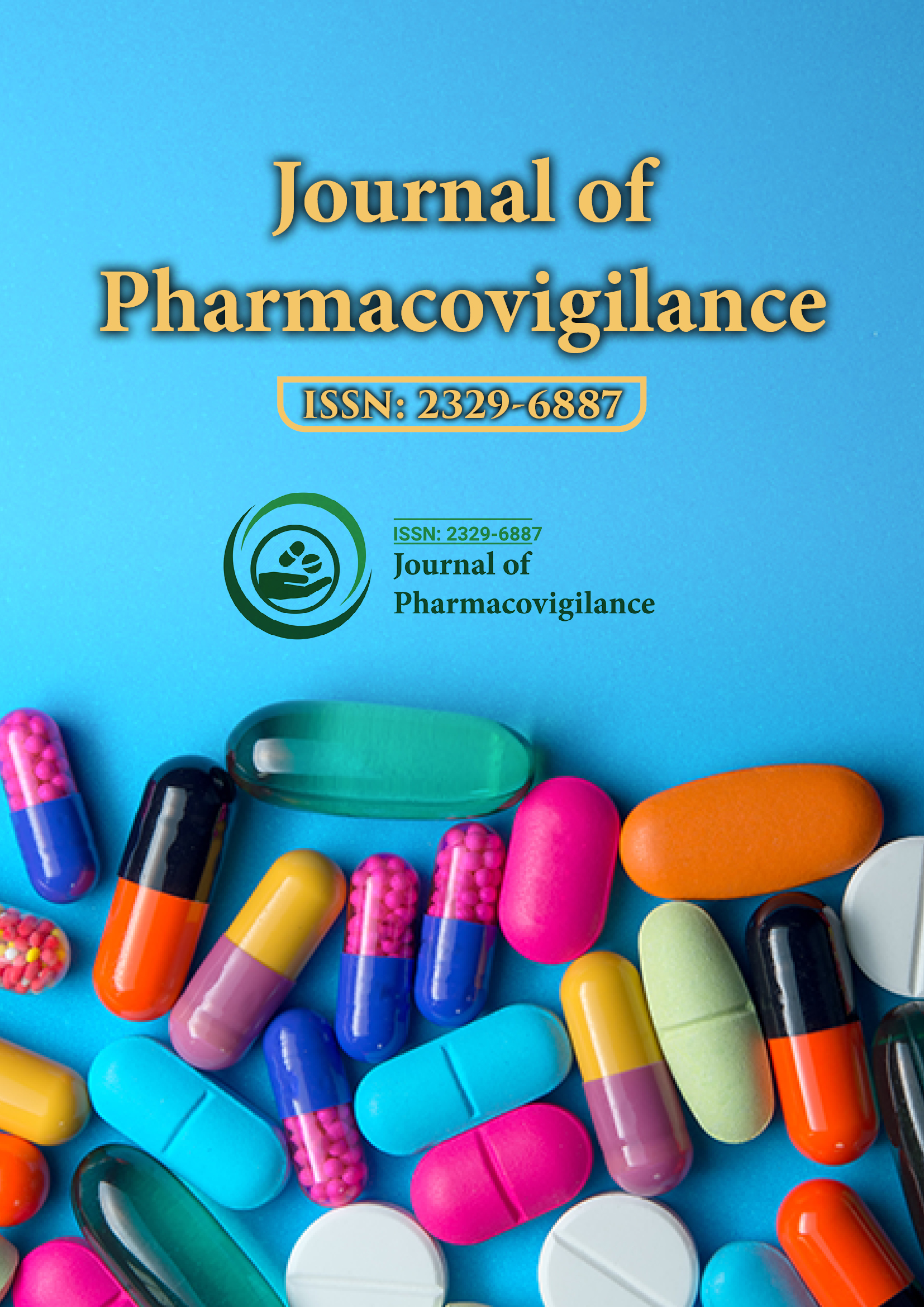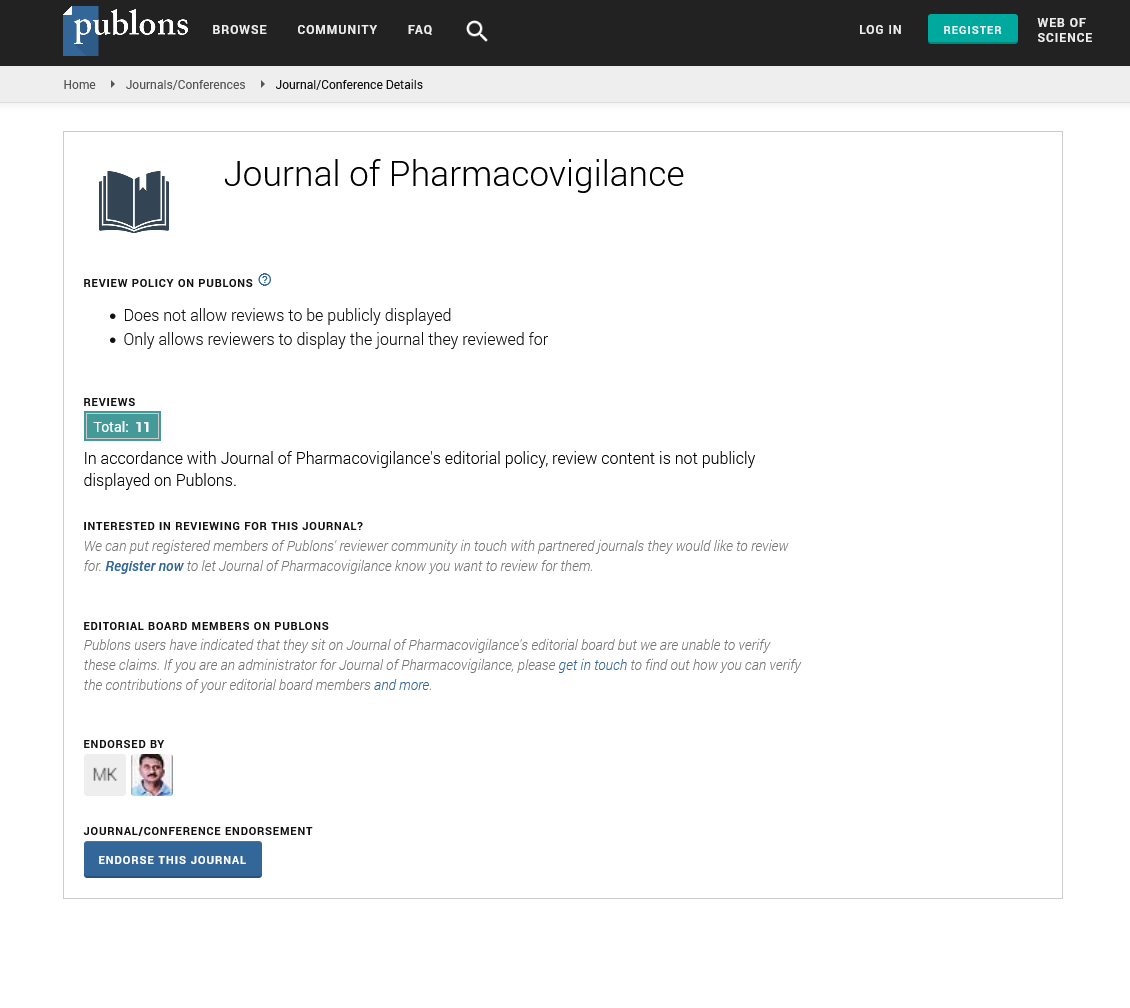Indexed In
- Open J Gate
- JournalTOCs
- The Global Impact Factor (GIF)
- RefSeek
- Hamdard University
- EBSCO A-Z
- OCLC- WorldCat
- Publons
- Euro Pub
- Google Scholar
Useful Links
Share This Page
Journal Flyer

Open Access Journals
- Agri and Aquaculture
- Biochemistry
- Bioinformatics & Systems Biology
- Business & Management
- Chemistry
- Clinical Sciences
- Engineering
- Food & Nutrition
- General Science
- Genetics & Molecular Biology
- Immunology & Microbiology
- Medical Sciences
- Neuroscience & Psychology
- Nursing & Health Care
- Pharmaceutical Sciences
Perspective - (2024) Volume 12, Issue 1
Evolving Role of Regulatory Agencies in a Globalized Pharmacovigilance Environment
Reza Hajebi*Received: 29-Feb-2024, Manuscript No. JP-24-25631; Editor assigned: 01-Mar-2024, Pre QC No. JP-24-25631(PQ); Reviewed: 15-Mar-2024, QC No. JP-24-25631; Revised: 22-Mar-2024, Manuscript No. JP-24-25631(R); Published: 29-Mar-2024, DOI: 10.35248/2329-6887.24.12.470
About the Study
The pharmaceutical industry is undergoing a metamorphosis driven by globalization. Companies are expanding their reach beyond national borders, developing and marketing drugs for a wider and more diverse patient population. This globalized landscape presents a unique set of challenges for regulatory agencies tasked with ensuring the safety and efficacy of medications. Consequently, the role of these agencies within the area of pharmacovigilance–the science and practice of monitoring the effects of medications–is undergoing a critical evolution.
Beyond adverse event reporting: A broader pharmacovigilance scope
Traditionally, pharmacovigilance focused primarily on the passive collection and reporting of Adverse Events (AEs) associated with medications. While this remains a foundation of the process, the global environment necessitates a more comprehensive and proactive approach. Regulatory agencies are now called upon to:
• A critical shift involves developing and implementing comprehensive Risk Management Plans (RMPs) throughout a drug's lifecycle. These plans, encompassing pre-clinical trials, clinical development, and post-marketing surveillance, proactively identify potential safety concerns and establish mitigation strategies.
• The sheer volume and diversity of data generated in a globalized setting necessitates sophisticated data analysis tools. Regulatory agencies are increasingly relying on advanced statistical methods and Artificial Intelligence (AI) to identify subtle signals of potential safety risks within vast datasets. These signals may emerge from spontaneous reporting systems, electronic health records, social media platforms, and real-world data registries.
• The risk profile of a drug can evolve over time, particularly when used in new patient populations or for novel indications. Regulatory agencies must continuously reassess the benefit-risk profile of medications, taking into account emerging safety data and the evolving therapeutic landscape. This dynamic evaluation ensures that the therapeutic benefits of a drug continue to outweigh the potential risks for patients.
Collaboration and harmonization: Building a global safety net
Effectively navigating the complexities of global pharmacovigilance necessitates a collaborative effort. Regulatory agencies across the globe must encourage closer ties and information sharing to create a strong safety net for patients worldwide. Key areas of collaboration include:
• Standardization of data collection, analysis, and reporting of AEs is crucial for efficient information exchange. Regulatory agencies must work with international bodies like the International Council for Harmonisation of Technical Requirements for Pharmaceuticals for Human Use (ICH) to establish consistent guidelines across jurisdictions. This harmonization ensures that safety data from diverse sources can be readily compared and analyzed, leading to a more comprehensive understanding of a drug's safety profile.
• Regulatory agencies can learn from each other's experiences and expertise by establishing open communication channels and knowledge-sharing initiatives. This collaborative approach allows for the identification and implementation of best practices in pharmacovigilance, ultimately leading to a more strong and efficient global safety system.
• Developing countries often lack the resources and infrastructure for strong pharmacovigilance systems. Regulatory agencies in developed nations can play a vital role in capacity building by providing training, technical assistance, and technology transfer to their counterparts in developing regions. This collaborative effort ensures that the benefits of effective pharmacovigilance extend to all corners of the globe.
Grab technological advancements: Tools for a datadriven future
Technological advancements are revolutionizing the field of pharmacovigilance. Regulatory agencies are increasingly leveraging the power of:
• The globalized landscape generates massive datasets containing valuable insights into drug safety. Big data analytics tools allow regulatory agencies to extract trends and identify potential safety signals from these vast troves of information. This data-driven approach allows for a more proactive and comprehensive understanding of a drug's safety profile.
• AI-powered tools are being developed to automate tasks like data analysis and signal detection. This frees up regulatory resources, allowing for faster and more thorough safety monitoring. Additionally, AI can identify complex patterns and relationships within datasets that may be missed by traditional methods.
• Telemedicine and mHealth technologies offer new avenues for real-time reporting of AEs by healthcare providers and patients. This allows for the rapid identification and investigation of potential safety concerns, leading to a more timely response and improved patient safety.
Conclusion
The rapidly evolving landscape of globalized pharmacovigilance demands a shift in the approach of regulatory agencies. By grab a proactive, data-driven, and collaborative approach, regulatory agencies can ensure the safety and efficacy of medications for a globalized population. Through strong risk management plans, sophisticated signal detection tools, continuous benefit-risk assessments, and international collaboration.
Citation: Hajebi R (2024) Evolving Role of Regulatory Agencies in a Globalized Pharmacovigilance Environment. J Pharmacovigil. 12:470.
Copyright: © 2024 Hajebi R. This is an open-access article distributed under the terms of the Creative Commons Attribution License, which permits unrestricted use, distribution, and reproduction in any medium, provided the original author and source are credited.

